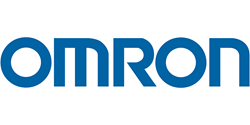Electronic systems are inherently sensitive to external contaminants like dirt, water, EMF, temperature, and radiation. To counteract these inhibitors, electronics are often enclosed in functional protection devices―like cases―that are certifiably rated to protect the electronics against harm. The certification most often used to quantify this rating is the Ingress Protection (IP) rating, as presented by the International Electrotechnical Commission (IEC) in IEC 60529. Here's how to understand a product's IP rating.
What is an IP Rating?
A product's IP rating indicates its ability to resist dust and water contaminants at varying levels of time and other factors. IP ratings come in two- or three-digit character representations and are always prefaced by the letters 'IP,' such as IP67 or IP69K. This rating is exclusive to solids and liquids, as they are the most common contaminants that quickly inhibit or destroy electronics.
This circular connector from ITT is rated IP67:
Ähnliches Produkt:
Solids like mud and dust accumulate and form insulative layers on electronics, which can cause overheating and malfunction in individual components, as well as entire systems. Liquids like water, which is a conductor, can create short circuits in electronics that can either temporarily or permanently destroy an entire electronic system. For example, you can blame excessive exposure to moisture for up to 20% of broken cell phones.
IP69K: Highest Rated IP Design
Protection against solids and moisture is paramount in automotive applications, especially when electronics are at work in functional safety systems. Driving conditions often expose vehicles to dirt, sand, debris, bugs, moisture, and chemicals, which means cars and trucks need specially designed housings and connectors for their electronic systems. These applications therefore demand very high IP ratings. Components in automotive applications often require IP69K, the highest-rated IP design.
This connector from TE Connectivity boasts the IP69K rating:
IP Rating Scale and Meaning
The two-to three-digits in an IP rating pertain to solids (the first digit) and liquids (represented by the second digit).
Solids Ingress Protection (IP) Rating Scale (per IEC 60529):
- Protected against a solid object greater than 50mm with a force of up to 50 Newtons
- Protected against a solid object greater than 12.5 mm with a force up to ten Newtons
- Protected against a solid object greater than 2.5 mm with a force up to three Newtons
- Protected against a solid object greater than 1 mm with a force up to one Newton
- Dust-protected. Limited ingress of dust permitted. Will not interfere with operation of equipment for two to eight hours
- Dust-tight. No ingress of dust for two to eight hours.
Liquids Ingress Protection (IP) Rating Scale (per IEC 60529):
- Protected against vertically falling drops of liquid. Ingress shall have no harmful effects
- Protected against vertically falling drops of liquid with enclosure tilted up to 15 degrees from vertical. Ingress shall have no harmful effects
- Protected against vertically falling drops of liquid with enclosure tilted up to 60 degrees from vertical. Ingress shall have no harmful effects
- Protected against liquid splashed from all directions. Ingress shall have no harmful effects
4K - protected against water splashed from all directions as an increased pressure
5. Protected against low-pressure jets of water. Ingress shall have no harmful effects
6. Protected from liquid projected in powerful jets against the enclosure from any direction. Ingress shall have no harmful effects
6K - Protected from water projected in powerful jets, at an increased pressure, against the enclosure from any direction. Ingress shall have no harmful effects
7. Protected from liquid while enclosure is immersed under standardized conditions of pressure and time (temporary submersion). Ingress of water shall have no harmful effects
8. Protected from liquid while enclosure is immersed under standardized conditions of pressure and time (permanent submersion). Ingress of water shall have no harmful effects
9. Protected from liquid projected from a close range at high pressure and high temperatures against the enclosure from any direction. Ingress of water shall have no harmful effects
9K - Protected from liquid projected from a close range at high pressure and high temperatures, including steam cleaning, against the enclosure from any direction. Ingress of water shall have no harmful effects
IP ratings use these two scales to form a single rating, such as IP22, IP34, and IP67. For example, an IP67 rating means that the electronics enclosure is rated to protect against dust completely for up to eight hours and against a temporary submersion in liquid under standard conditions (usually 30 minutes) without causing harm to the electronics. Electronic enclosure ratings in automotive applications are often dictated by their functional safety requirements, per ISO 26262 or IEC 61508. However, engineers may design equipment to boast a more stringent IP rating, if they choose.
IP Ratings in Vehicles
In automotive applications, you'll see various IP ratings throughout a vehicle. The speaker housings in a convertible car may feature an IP67 rating, though submersion is unlikely, and its design is at the discretion of the manufacturer. In critical systems such as wiring harnesses in the engine compartment, high IP ratings of IP65 and above are standard and required by the ASIL rating of the electronics system. Regardless of the IP rating, standardizing contaminant prevention is essential in the automotive industry.



